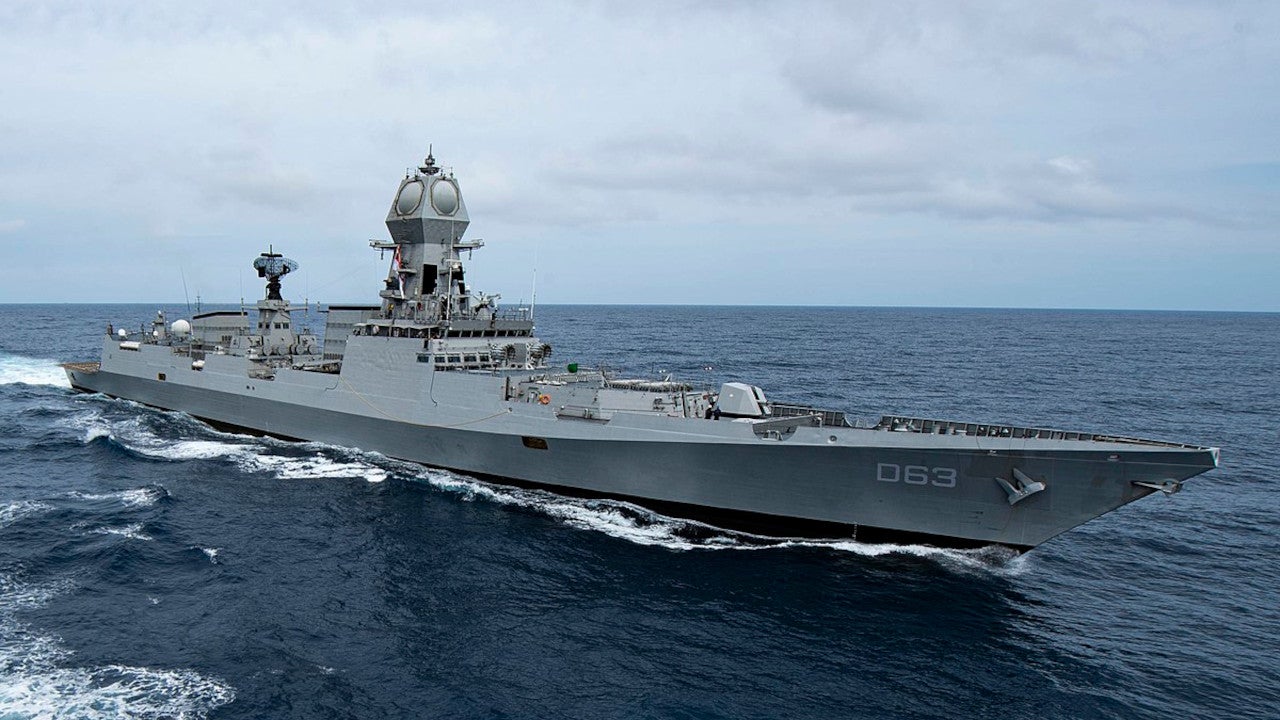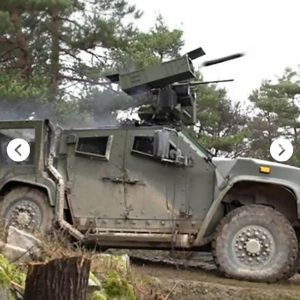On September 12, the Indian Navy told the world that the Indian Navy has planned its future development plan and it will be divided into nine projects. Among them, there are not only supply ships with a displacement of 45,000 tons serving along with aircraft carriers, but also minesweepers with a displacement of several hundred tons. Of course, the most eye-catching is the latest development plan of the Indian Navy’s destroyers. This advanced model with an estimated displacement of up to 13,000 tons is not only another large-tonnage destroyer in the world after the US DDG(X), but it is also an ambitious planned number of 10 ships for the Indian Navy.

In the late 1970s, the U.S. Navy was keenly aware of the advancement of combat systems, and finally, under great pressure faced from the Soviet Navy, launched the “Ticonderoga” class cruiser. This advanced warship with a displacement of 9,500 tons was even developed as a destroyer at first. Through the ship-borne “Aegis” combat system, various types of radars, weapons, and sensors were integrated into one in the new era. After the “Ticonderoga”, the U.S. Navy built the “Arleigh Burke” class destroyer with a slightly reduced tonnage in view of the low number of constructions caused by its high cost. The latter’s iconic “Standard-6” long-range ship-to-air missile and SPY-1 phased array radar have become the most impressive advanced shipborne equipment to the world, and have also become the direct object of imitation by other countries.
In fact, in the late 1980s, even the Soviet Navy abandoned the “modern” and “dreadnought” destroyers to cooperate with the formation of maritime formations, and turned to the more potential “dreadnought” (equipped with gas turbines), to build a multi-purpose “Dreadnought II” similar to the “Arleigh Burke”. Later, the Soviet Union collapsed. Although the transformation of the Soviet navy came to an abrupt end, countries like Japan, South Korea, Australia and Europe quickly recognized the advantages of this design and followed suit within their capacity, giving birth to various “Shield Ship”. Since then, “Aegis” ships, which not only carry long-range ship-to-air missiles to ensure survivability, but also can be equipped with “Tomahawk” and other cruise missiles to attack land targets, have become popular around the world, and the British navy destroyers have become the imitation objects of various countries.

Of course, under this tide, the pace of development of the Chinese Navy is somewhat slow, but it has not been left too far. The first domestically produced Type 052C destroyer with long-range air defense capability was launched in the early 21st century and joined the Navy, becoming the “China Aegis” ship that attracted much attention at that time. Just after 2010, when the world rejoiced at the construction of the more advanced 052D, the truly groundbreaking Type 055 destroyer quietly started construction in 2014. With the deepening of the construction work, this 12,500-ton large destroyer quickly attracted the attention of the world, and attracted world attention after the launch of the first ship Nanchang. The U.S. media took the lead in citing the U.S. Navy’s statement that the 055 was called a “cruiser”, and was followed up by media such as Japan, Australia, and Europe. When the Nanchang ship entered the Sea of Japan through the Tsushima Strait after it was in service, and arrived in the waters near Alaska in the United States in another operation, the world finally had an understanding of the combat effectiveness of the 055.
In many literatures, the powerful combat effectiveness of the 055 is directly attributed to its huge tonnage. This statement cannot be said to be incorrect, but it does not involve the real core elements. On the surface, the 055 is equipped with all the core equipment of the classic American “Aegis” ship. It is no problem to regard the latter as an enlarged and evolved version, but the key lies in the unique 850mm vertical launcher. This unique large-diameter device limits the number of vertical launch units of the 055. The final number of 112 is not as good as that of the US Navy’s less than 10,000 tons of “Ticonderoga” class cruisers (128). However, the more abundant internal space makes the quality of the ship-borne weapons carried by the 055 have room for a substantial improvement. This is most obvious after the domestic YJ-21 anti-ship ballistic missile was tested on the 055.

The US Navy used the MK-41 vertical launcher on the “Ticonderoga” and “Arleigh Burke”, which was based on the standard-6 and “Tomahawk” dimensions developed at the time. After more than 30 years, the range of ship-to-air missiles has further increased. The original medium-range ship-to-air missiles with a range of 30 kilometers have developed to around 70 kilometers. The long-range ship-to-air missiles have become irreversible. But long-range is based on more fuel and a larger body, which can only be accommodated by a larger-sized vertical launcher. The anti-ship/land ballistic missile that replaced the previous subsonic cruise missile and became a long-range attack weapon has greater requirements for the size of the launch vehicle. Therefore, although the increase in the size of the 055 vertical launcher seems inconspicuous, the overall engagement distance has been fully upgraded, and the tactical thinking behind it has also changed.
In contrast, the largest destroyer currently built by the Indian Navy is the 7,300-ton P-15B type, and advanced weapons including vertical launchers, phased array radars, and ship-to-air missiles are all imported from other countries. Under this circumstance, the Indian Navy tried to learn from the breakthrough idea of 055 and develop a new era 13,000-ton destroyer in a short period of time, which seems to be completely unrealistic and impossible on its own. For the Indian Navy, which has never been able to work very hard on domestic advanced shipborne equipments, only when the 13,000-ton destroyer becomes a standard equipment that can be seen everywhere like the previous “Aegis” ship, India will have to spend a lot of money to import subsystems from other countries for building these massive destroyers. Of course, the Indian Navy’s 13,000-ton destroyer realized in this mode, if the number of ships built reaches 10, it will have good deterrent effect.
If the American “Aegis” ship is a dreadnought-class battleship in the new era, then 055 can be regarded as a post-dreadnought battleship in the new era. While suppressing ordinary “Aegis” ships, the follow-up development has unlimited possibilities. For example, because the 055 is equipped with a large number of electronic equipment that consumes a lot of power, the power output by its power unit is actually very tight. As far as the current level of technology is concerned, the much-anticipated all-electric propulsion will be an excellent solution, which is also the expectation of the outside world for the improvement direction of the subsequent batches of 055. It also reveals that no matter how high it has been in the field of equipment development, only continuous improvement is the most effective way to always maintain a leading position.





